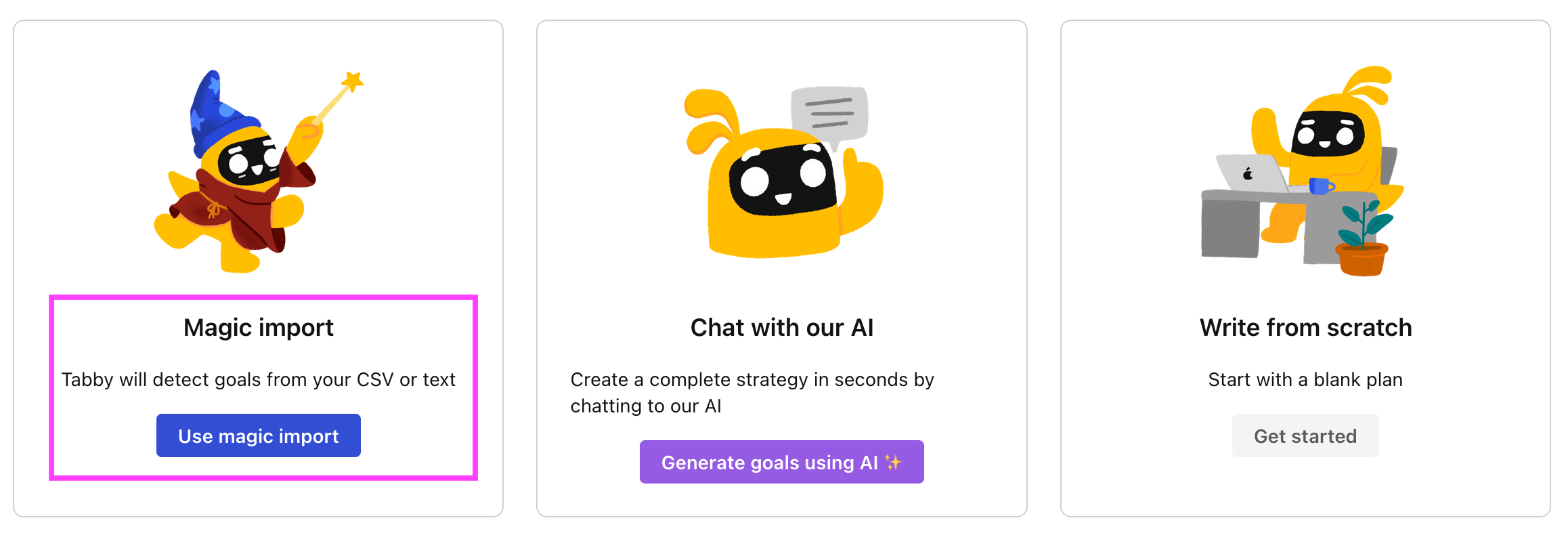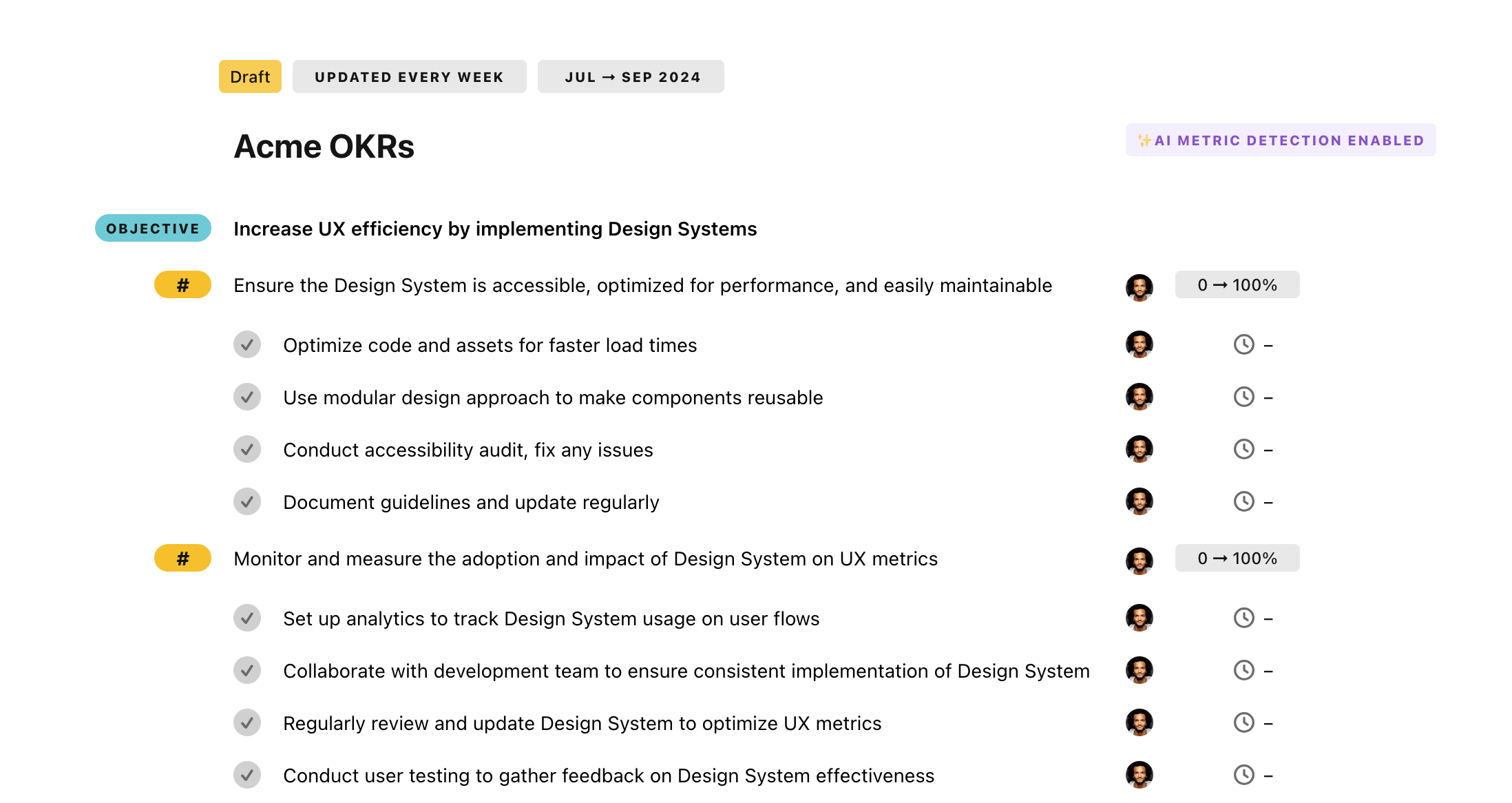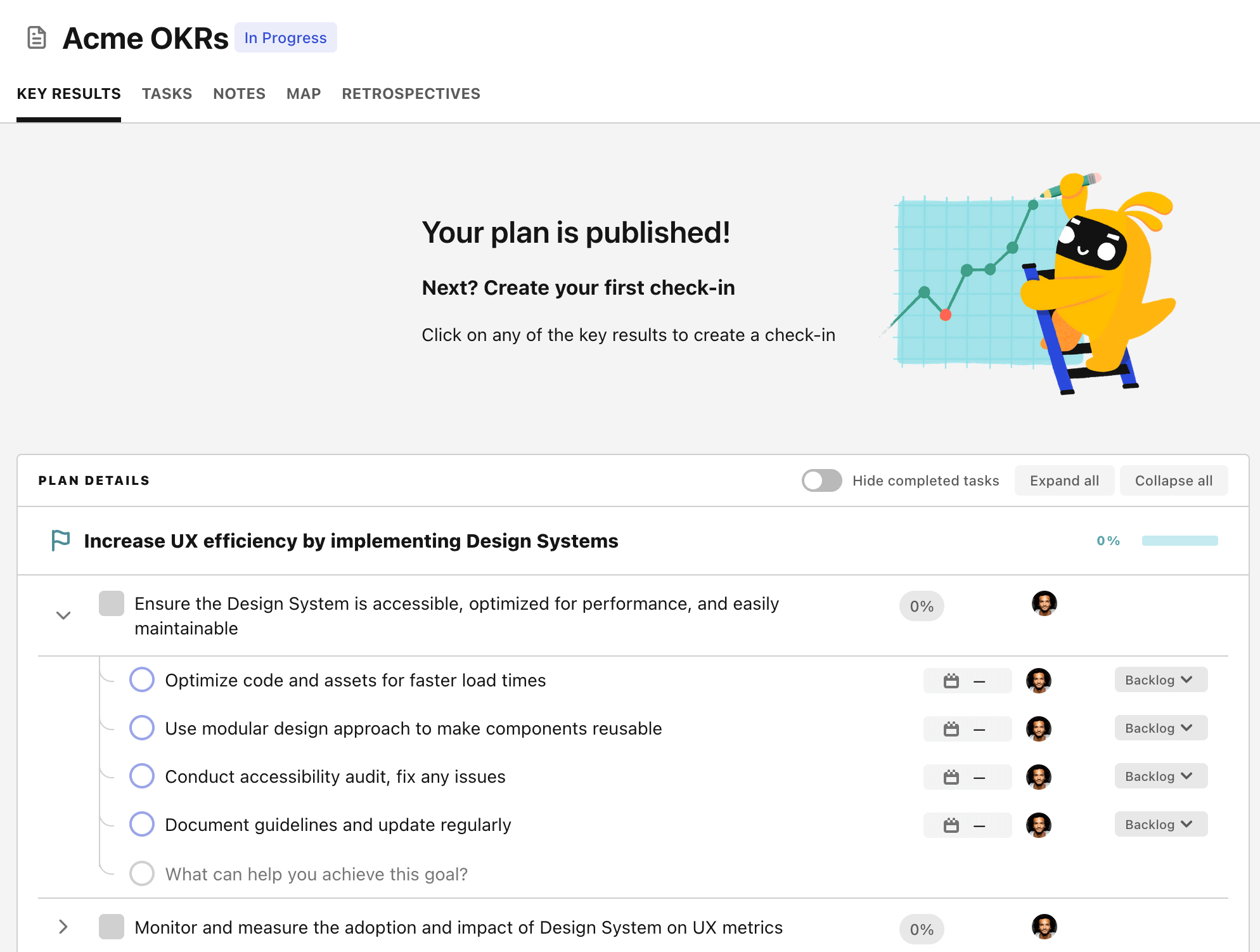OKR template to efficiently balance work, family, kids' school, and sports activities
Your OKR template
The second objective is the organization of weekly family discussions for updates and planning. This requires meticulous planning of discussion topics, scheduling a recurring time slot for these discussions, and active facilitation to ensure every family member’s involvement.
Thirdly, the creation and implementation of a family calendar are addressed. This calendar aims to improve the monitoring of weekly activities. To achieve this, a color-coding system for individuals' activities will be introduced, an accessible and noticeable location for the calendar will be chosen, and weekly activities for each family member will be consistently updated.
In summary, this OKR provides a comprehensive plan that encompasses every aspect of daily life from work to family discussions to personal activities. It employs some effective methods such as eliminating unnecessary interruptions, organizing family discussions, and implementing a tracking system for activities to ensure a balance in handling work, family, children's education, and sports activities.
ObjectiveEfficiently balance work, family, kids' school, and sports activities
KRAllocate specific, uninterrupted hours for work five days a week
Disable all non-essential notifications during work hours
Communicate work schedule to colleagues and family
Establish a set work schedule from Monday-Friday
KRArrange and conduct weekly family discussions for updates and planning
Plan discussion topics regarding family updates and plans
Schedule a recurring time slot for weekly family discussions
Facilitate the weekly discussions to ensure participation
KRDesign and implement a family calendar to track all activities weekly
Implement a color-coding system for individuals' activities
Choose a visible location for placing the calendar
Fill out weekly activities for each family member
How to edit and track OKRs with Tability
You'll probably want to edit the examples in this post, and Tability is the perfect tool for it.
Tability is an AI-powered platform that helps teams set better goals, monitor execution, and get help to achieve their objectives faster.
With Tability you can:
- Use AI to draft a complete set of OKRs in seconds
- Connect your OKRs and team goals to your project
- Automate reporting with integrations and built-in dashboard
Instead of having to copy the content of the OKR examples in a doc or spreadsheet, you can use Tability’s magic importer to start using any of the examples in this page.
The import process can be done in seconds, allowing you to edit OKRs directly in a platform that knows how to manage and track goals.
Step 1. Sign up for a free Tability account
Go tohttps://tability.app/signup and create your account (it's free!)
Step 2. Create a plan
Follow the steps after your onboarding to create your first plan, you should get to a page that looks like the picture below.

Step 3. Use the magic importer
Click on Use magic import to open up the Magic Import modal.
Now, go back to the OKR examples, and click on Copy on the example that you’d like to use.

Paste the content in the text import section. Don’t worry about the formatting, Tability’s AI will be able to parse it!

Now, just click on Import from text and let the magic happen.

Once your example is in the plan editor, you will be able to:
- Edit the objectives, key results, and tasks
- Click on the target 0 → 100% to set better target
- Use the tips and the AI to refine your goals
Step 4. Publish your plan
Once you’re done editing, you can publish your plan to switch to the goal-tracking mode.

From there you will have access to all the features that will help you and your team save hours with OKR reporting.
- 10+ built-in dashboards to visualise progress on your goals
- Weekly reminders, data connectors, and smart notifications
- 9 views to map OKRs to strategic projects
- Strategy map to align teams at scale